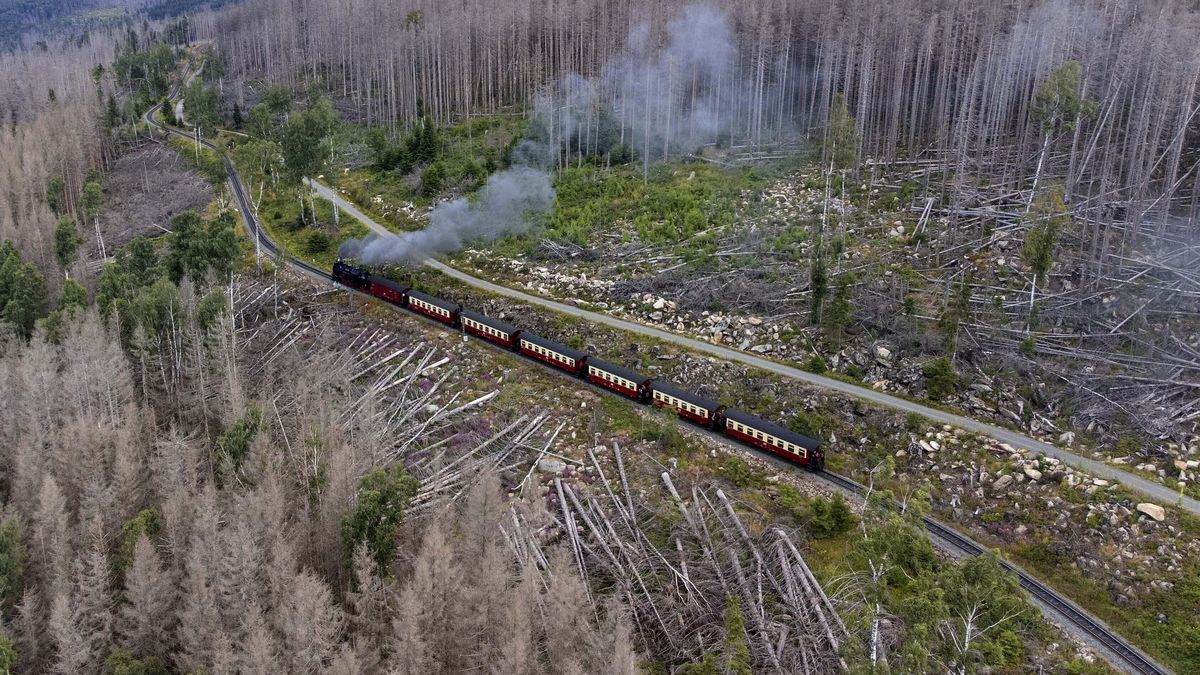Known as “bookprinters” for the bark-eating lines that extend from a single column and resemble words on a page, these eight-toothed beetles have always been a part of the local forest. Authorities expect they would typically kill a few fir trees each summer as they find suitable trees to lay their eggs: they burrow into the tree’s cambium, or growth layer, preventing it from getting the nutrients it needs to survive.
But the tiny insects have been wreaking outrageous devastation in the forests in recent years, and authorities are fighting to control the pest before the fir population is completely decimated. Two-thirds of the region’s fir trees have already been destroyed, said Alexander Ahrenhold of the Lower Saxony state forest office, and as man-made climate change makes the region drier and the trees are homes more favorable for beetle larvae, environmentalists are preparing for the worst.
“Since 2018 we have had extremely dry summers and high temperatures, so almost all the trees have had problems,” Ahrenhold said. Fir trees in particular need a lot of water, and having less than they need weakens their defenses so they can’t produce their natural resin-based repellent, he said.
As the planet warms, longer droughts are becoming more common around the world, and higher temperatures are also drying up moisture in the soil and plants.
And while the beetles tend to attack weakened trees, in dry years the population can reproduce so much “that the beetles were able to attack even healthy fir trees in large numbers,” he said. “In some regions there are no more fir trees.”
Experts say there is no easy solution, but forest managers work to remove trees that could be susceptible to the beetles as soon as possible, and use insecticides when required.
Michael Müller, chair of Forest Protection at the Technical University in Dresden, said there are “very strict requirements for the use of pesticides” that can be very effective in killing beetles, although these chemicals are sometimes frowned upon for their potential harmful side effects on the environment.
“Of course it is preferable to take raw wood out of the forest and send it for recycling, or store it in non-hazardous areas outside the forest,” he said, but noted that this requires a separate logistics operation. In the case of trees that are still standing, he pointed out to her, it’s not really possible to remove the beetles.
Müller noted that forest conservation measures “can sometimes take decades from implementation to take effect,” and other factors, such as storms and drought, and other species, such as game and mice, can also hinder plant growth, are potentially more damaging to the forest in the long term than the bark beetle.
But he said conservation efforts are constrained by external factors, such as changing weather.
“After all, we can’t irrigate the forests,” he said.
In the long term, interspersing other tree species in the forest could be a solution, Ahrenhold said. “It makes sense to plant other conifers that can better cope with these conditions, especially on south-facing hills and on very dry land,” he said.
The fact that there are too many fir trees in the Harz Mountains is a result of centuries of planting large concentrations of the tree, according to Richard Hölzl, an environmental historian at the University of Goettingen and the Museum of the Five Continents in Munich.
“Clausthal-Zellerfeld is a prominent example of a mining area in the Harz where they tried very early to establish artificial propagation of fir trees so that they would be available for mine construction work,” Hölzl said.
In the 19th century, authorities realized that planting just one type of tree over and over again was not a good idea from an ecological point of view, but “economics outweighed that realization because fir was such an attractive species,” he said. The fir was the tree of choice for industrial forestry, paper mills, and pulping.
Still, if it weren’t for the warmer and drier weather due to climate change, bark beetles wouldn’t be flourishing on all those fir trees.
“There is a long, long prehistory, but now there is also (climate) change,” Hölzl added. “We really can’t blame that on our ancestors.”
___
The Associated Press’s climate and environmental coverage receives support from several private foundations. The AP is solely responsible for all content.
FOUNTAIN: Associated Press

